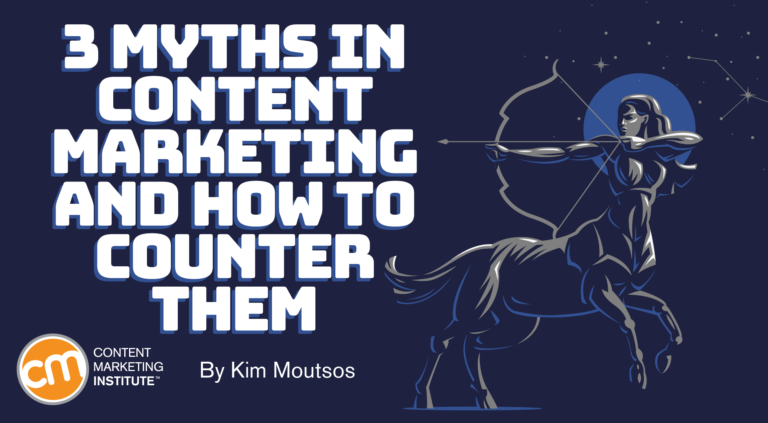Though he called his CMWorld talk Separating Truth from Myth on Developing Successful Content Within Paid Advertising Campaigns, the myths apply well beyond paid advertising. I wrote about what the term content means last year and found plenty of definitions for the term. Make sure to define content when you’re talking to people outside your team. We who work in content know that advertising and content marketing play different roles. But if you don’t help your leadership team or clients understand that content marketing and advertising are distinct practices for different purposes, you set up your program to confuse and possibly disappoint the stakeholders. Advertising’s role is to communicate brand messaging and/or product reasons-to-believe. Myth 3: To be authentic is to be real The notion of authenticity in content marketing is possibly overused and often misused. You can be an authentic liar.” Robert writes about authenticity in terms of brands earning trust. “Your brand can be authentic,” he says, “and still be distrusted.” What’s the difference between being authentic and being “real”? Well, it looks like real people.

Those of us who work on content teams eat, breathe, and dream the stuff. But running into someone who doesn’t “get” content marketing changes (and sometimes challenges) your perspective on assumptions you make every day.
I recently watched a Content Marketing World session I missed in September and had one of those aha moments: Oh, that’s why that client didn’t understand the project we pitched. That explains the disconnect between what the sales team thought would happen and what the marketing team knew would happen.
The speaker on my screen was Dan Rubin, executive director of Foundry, magazine giant Meredith Corp.’s in-house agency. He is someone who gets content, content marketing, native advertising, and the interplay among them.
Though he called his CMWorld talk Separating Truth from Myth on Developing Successful Content Within Paid Advertising Campaigns, the myths apply well beyond paid advertising.
Myth 1: Content is undefined
When the content-is-undefined myth popped up in Dan’s presentation, I thought he had phrased it wrong. I wrote about what the term content means last year and found plenty of definitions for the term.
The truth is “content” means different things to different people. But the result is almost the same thing as having no definition at all.
Dan frames it this way: “We say, ‘We’re going to do content with this deal’ or “We’re going to have content marketing.’ And then you look at the client and they’re like, ‘What do you even mean?’”
You know what you mean by content, but your colleagues on other teams or your clients (or neighbors or parents or unsuspecting party guests who ask what you do for a living) hear a term so vague it flirts with meaninglessness.
How to counter: Content may be the worst term for what we create except for all the others (Dan’s paraphrase of the Winston Churchill quote on democracy). Make sure to define content when you’re talking to people outside your team.
In his work, Dan uses this definition: “Content is editorial-minded assets that meet the audience’s needs.” Editorial-minded, he says, means the assets include a point of view.
CMI founder Joe Pulizzi has defined content as “compelling information that informs, engages, or amuses.”
Pick a definition and share it widely.
Myth 2: Content marketing is just advertising
You’ve probably encountered people who lump all marketing activities together. I know I have. We who work in content know that advertising and content marketing play different roles. We know companies can (and often should) use both.
But if you don’t help your leadership team or clients understand that content marketing and advertising are distinct practices for different purposes, you set up your program to confuse and possibly disappoint the stakeholders.
How to counter: Use Dan’s straightforward explanation of the…

COMMENTS